($42):  Jed Steele, who has made wine in California for almost 50 years, is no stranger to the endeavor. He has purchased fruit from Stymie Vineyard for 15 years before buying it in 2005. A big wine, it is not overblown (though the bottle is). … Read more
Jed Steele, who has made wine in California for almost 50 years, is no stranger to the endeavor. He has purchased fruit from Stymie Vineyard for 15 years before buying it in 2005. A big wine, it is not overblown (though the bottle is). … Read more
Category Archives: Reviews
Craggy Range, Martinborough (North Island, New Zealand) Sauvignon Blanc Te Muna Road Vineyard 2016
($21, Kobrand Wine & Spirits):  Though not the current release, this wine is still on the retail market broadly across the country and shows how nicely New Zealand Sauvignon Blanc can develop. A welcome mineral-like complexity has appeared a top an ever so slightly decreased hallmark vibrancy of New Zealand Sauvignon Blanc. … Read more
Though not the current release, this wine is still on the retail market broadly across the country and shows how nicely New Zealand Sauvignon Blanc can develop. A welcome mineral-like complexity has appeared a top an ever so slightly decreased hallmark vibrancy of New Zealand Sauvignon Blanc. … Read more
I Clivi, Friuli Colli Orientali DOC (Venezia Giulia, Italy ) Bianco 2016
($35):  Ferdinando e Mario Zanusso of I Clivi (which means the slopes) make superb wines. Their Clivi Galea is a single vineyard with 70-yesr old vines (according to their website) located on the southern tip of the appellation, near the Slovenian border.… Read more
Ferdinando e Mario Zanusso of I Clivi (which means the slopes) make superb wines. Their Clivi Galea is a single vineyard with 70-yesr old vines (according to their website) located on the southern tip of the appellation, near the Slovenian border.… Read more
Castellare di Castellina, Chianti Classico Riserva DOCG (Tuscany, Italy) Il Poggiale 2016
($35, Winebow):  Castellare di Castellina, one of Chianti’s traditional and best producers, hits the bullseye again with this Riserva. The grapes come from a single vineyard that they think produces superior fruit. After tasting it, I certainly agree there’s something special going on. … Read more
Castellare di Castellina, one of Chianti’s traditional and best producers, hits the bullseye again with this Riserva. The grapes come from a single vineyard that they think produces superior fruit. After tasting it, I certainly agree there’s something special going on. … Read more
Boutari, Santorini PDO (Greece) Assyrtiko 2018
($64, Terlato Wines International):  Boutari, founded in Naoussa in Macedonia in 1879 and is one of the best-known producers of Greek wines, started making Assyrtiko on Santorini about 30 years ago. They wisely put the phonetic pronunciation of the grape name, which may be unfamiliar to Americans, on the back label. … Read more
Boutari, founded in Naoussa in Macedonia in 1879 and is one of the best-known producers of Greek wines, started making Assyrtiko on Santorini about 30 years ago. They wisely put the phonetic pronunciation of the grape name, which may be unfamiliar to Americans, on the back label. … Read more
Tselepos, Santorini PDO (Greece) Assyrtiko “Canava Chrissou” Vieilles Vignes 2016
($35):  Prices of Assyrtiko from Santorini, rapidly becoming the signature white wine from Greece, have always been higher than other Greek white wines because of the labor-intensive farming involved. Farmers plant the basket-like vines in holes to protect them from the winds. … Read more
Prices of Assyrtiko from Santorini, rapidly becoming the signature white wine from Greece, have always been higher than other Greek white wines because of the labor-intensive farming involved. Farmers plant the basket-like vines in holes to protect them from the winds. … Read more
Alpha Estate, Florina IGT (Amyndeon, Greece) Malagouzia Turtles Vineyard 2019
($19):  Malagouzia, sometimes spelled Malagousia, an aromatic indigenous northern Greek grape, was nearly extinct until the 1970s when an enology professor encouraged Vangelis Gerovassiliou (one of his students and now one of the best producers of it), to explore its possibilities. … Read more
Malagouzia, sometimes spelled Malagousia, an aromatic indigenous northern Greek grape, was nearly extinct until the 1970s when an enology professor encouraged Vangelis Gerovassiliou (one of his students and now one of the best producers of it), to explore its possibilities. … Read more
Domaine Ktima Gerovassiliou, Epanomi IGT (Macedonia, Greece) White Wine 2019
($20):  Gerovassiliou, who is credited with saving the Malagouzia grape from extinction, blends it with Assyrtiko to create this charming wine. It is more floral than his monovarietal Malagouzia, which is surprising since one might assume that the Assyrtiko would add more structure and minerality. … Read more
Gerovassiliou, who is credited with saving the Malagouzia grape from extinction, blends it with Assyrtiko to create this charming wine. It is more floral than his monovarietal Malagouzia, which is surprising since one might assume that the Assyrtiko would add more structure and minerality. … Read more
Domaine Ktima Gerovassiliou, Epanomi IGT (Macedonia, Greece) Malagouzia Single Vineyard 2019
($27):  Vangelis Gerovassiliou, the man credited with rescuing this grape from extinction, makes a superb example of it at his estate near Thessaloniki, Greece’s second largest city and the country’s most important port. The captivating combination of subtle tropical fruits and bracing acidity is, of course, present. … Read more
Vangelis Gerovassiliou, the man credited with rescuing this grape from extinction, makes a superb example of it at his estate near Thessaloniki, Greece’s second largest city and the country’s most important port. The captivating combination of subtle tropical fruits and bracing acidity is, of course, present. … Read more
Tsantalis Vineyards and Wineries, Mount Athos PGI (Macedonia, Greece) Xinomavro-Grenache-Limnio “Agioritiko Abaton” 2015
($25):  A little label interpretation is order for this terrific red wine. Mount Athos, which means Holy Mountain, sits on one of finger-like peninsulas just east of Thessaloniki and is a UNESCO World Heritage site. Tsantalis is considered to be a superb producer in this region. … Read more
A little label interpretation is order for this terrific red wine. Mount Athos, which means Holy Mountain, sits on one of finger-like peninsulas just east of Thessaloniki and is a UNESCO World Heritage site. Tsantalis is considered to be a superb producer in this region. … Read more
Dutton-Goldfield, Green Valley of Russian River Valley (Sonoma County, California) Chardonnay Rued Vineyard 2017
($55):  Warren Dutton, the renowned Sonoma County grape-growing farmer who tragically died in 2001, planted this Chardonnay in this vineyard in the late 1960s. Steve Dutton, his son, is now responsible for the farming, while Dan Goldfield takes care of the winemaking. … Read more
Warren Dutton, the renowned Sonoma County grape-growing farmer who tragically died in 2001, planted this Chardonnay in this vineyard in the late 1960s. Steve Dutton, his son, is now responsible for the farming, while Dan Goldfield takes care of the winemaking. … Read more
Dutton-Goldfield, Green Valley of Russian River Valley (Sonoma County, California) Chardonnay Dutton Ranch, Walker Hill Vineyard 2017
($50):  The contrasting Chardonnay under the Dutton-Goldfield label displays the same balance and suaveness as its brother from the Rued Vineyard. Instead of citrus notes, subtle toasty and nutty ones caress the palate. Still, great enlivening acidity keeps it fresh throughout the meal. … Read more
The contrasting Chardonnay under the Dutton-Goldfield label displays the same balance and suaveness as its brother from the Rued Vineyard. Instead of citrus notes, subtle toasty and nutty ones caress the palate. Still, great enlivening acidity keeps it fresh throughout the meal. … Read more
Piper Sonoma, Sonoma County (California) Blanc de Blancs NV
($22):  Piper Sonoma, a subsidiary of Piper Heidsieck, the French Champagne company, has been producing sparkling wines in California since 1980. Their wines have taken a quantum leap in quality recently. Take this Blanc de Blancs for example. Made primarily from Chardonnay (75%), with Pinot Blanc rounding out the blend, it is focused, with touches of green apple-like flavors.… Read more
Piper Sonoma, a subsidiary of Piper Heidsieck, the French Champagne company, has been producing sparkling wines in California since 1980. Their wines have taken a quantum leap in quality recently. Take this Blanc de Blancs for example. Made primarily from Chardonnay (75%), with Pinot Blanc rounding out the blend, it is focused, with touches of green apple-like flavors.… Read more
Scharffenberger Cellars, Mendocino County (California) “Brut Excellence” NV
($20):  Scharffenberger Cellars was, and now is again, judging from this wine, a leader in California sparkling wine. Founded in 1981, at a time when the subsidiaries of French Champagne companies were establishing outposts in California, Scharffenberger showed that domestically-owned producers could make top-flight sparkling wines. … Read more
Scharffenberger Cellars was, and now is again, judging from this wine, a leader in California sparkling wine. Founded in 1981, at a time when the subsidiaries of French Champagne companies were establishing outposts in California, Scharffenberger showed that domestically-owned producers could make top-flight sparkling wines. … Read more
Mandrarossa, Sicilia IGT (Sicily, Italy) Frappato “Costadune” 2018
($18, Palm Bay International):  Frappato, an indigenous Sicilian grape, is best known as a component of Cerasuolo di Sicilia, Sicily’s only wine awarded DOCG status. By itself, it’s a mid-weight wine that has a beguiling spiciness. The lack of wood aging allows the cherry-like fruitiness to shine. … Read more
Frappato, an indigenous Sicilian grape, is best known as a component of Cerasuolo di Sicilia, Sicily’s only wine awarded DOCG status. By itself, it’s a mid-weight wine that has a beguiling spiciness. The lack of wood aging allows the cherry-like fruitiness to shine. … Read more
Gai’a Wines, Santorini DOP (Greece) Assyrtiko Wild Ferment 2018
($38):  Gai’a, a leading producer of Greek wines, makes several wines from the Assyrtiko grape grown on Santorini. They are probably best known for their Assyrtiko labeled Thalassitis, which is blended from several vineyards on the island. This one, however, labeled Wild Ferment, comes exclusively from a single vineyard, Pyrgos, according to their website.… Read more
Gai’a, a leading producer of Greek wines, makes several wines from the Assyrtiko grape grown on Santorini. They are probably best known for their Assyrtiko labeled Thalassitis, which is blended from several vineyards on the island. This one, however, labeled Wild Ferment, comes exclusively from a single vineyard, Pyrgos, according to their website.… Read more
Artemis Karamolegos Winery, Santorini DOP (Greece) Assyrtiko 2018
($28):  Assyrtiko is Greece’s flagship white grape. Though its best expression is when it’s grown on the island of Santorini, it has become so popular that growers are planting it throughout Greece. This stellar example delivers the quintessential saline minerality for which the Santorini version is known. … Read more
Assyrtiko is Greece’s flagship white grape. Though its best expression is when it’s grown on the island of Santorini, it has become so popular that growers are planting it throughout Greece. This stellar example delivers the quintessential saline minerality for which the Santorini version is known. … Read more
Santo Wines, Santorini (Greece) Assyrtiko 2018
($22):  Although the best expression of Assyrtiko is from Santorini, not all Santorini Assyrtiko express the saline minerality similarly. Though grape and site is important, producer remains the critical element when selecting a wine, here and elsewhere. This Assyrtiko, one of four, from Santo Wines, a 1,200-member cooperative established on the island in 1947, is perfectly fine, crisp and clean, with citrus-y rather than saline notes. … Read more
Although the best expression of Assyrtiko is from Santorini, not all Santorini Assyrtiko express the saline minerality similarly. Though grape and site is important, producer remains the critical element when selecting a wine, here and elsewhere. This Assyrtiko, one of four, from Santo Wines, a 1,200-member cooperative established on the island in 1947, is perfectly fine, crisp and clean, with citrus-y rather than saline notes. … Read more
Tselepos, Mantinia (Peloponnese, Greece) Moschofilero 2018
($17, Cava Spiliadis):  Moschofilero, a grape indigenous to the Mantinia region of the Peloponnesus, produces a floral wine, reminiscent of Muscat, though far less fragrant. Its perfumed nature might make you think it’s sweet. Anything but. This one, from Tselepos, a top producer, is firm, with bracing acidity.… Read more
Moschofilero, a grape indigenous to the Mantinia region of the Peloponnesus, produces a floral wine, reminiscent of Muscat, though far less fragrant. Its perfumed nature might make you think it’s sweet. Anything but. This one, from Tselepos, a top producer, is firm, with bracing acidity.… Read more
Tselepos, Peloponnese (Greece) Amalia Brut NV
($29, Cava Spiliadis):  Sparkling wine from the Peloponnese has no legal appellation, but that has not stopped producers from making good ones. Tselepos, uses the Moschofilero grape and the traditional method of a secondary fermentation in the bottle (as in Champagne) to produce this delightful one. … Read more
Sparkling wine from the Peloponnese has no legal appellation, but that has not stopped producers from making good ones. Tselepos, uses the Moschofilero grape and the traditional method of a secondary fermentation in the bottle (as in Champagne) to produce this delightful one. … Read more
Matanzas Creek Winery, Sonoma County (California) Chardonnay “Journey” 2016
($65): 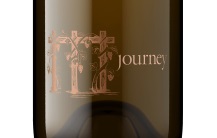 Big bottle. Big price tag. Big wine. Despite the all-around size, it is wonderfully balanced and nuanced, combining richness and verve. Matanzas Creek, which has been an iconic source in Sonoma County since 1977, notes on its website that they’ve built its reputation on Sauvignon Blanc and Merlot, which is true. … Read more
Big bottle. Big price tag. Big wine. Despite the all-around size, it is wonderfully balanced and nuanced, combining richness and verve. Matanzas Creek, which has been an iconic source in Sonoma County since 1977, notes on its website that they’ve built its reputation on Sauvignon Blanc and Merlot, which is true. … Read more
Rodney Strong Vineyards, Chalk Hill (Sonoma County, California) Chardonnay 2016
($22): 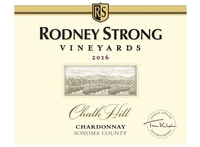 This is a remarkable Chardonnay. It’s rare to find a balanced Chardonnay at this price. Frequently, they’re too fruity or too oaky. This one strikes balance. It’s fruity, but not overdone, with a touch of creamy toasty oak, which, again, is not overdone. … Read more
This is a remarkable Chardonnay. It’s rare to find a balanced Chardonnay at this price. Frequently, they’re too fruity or too oaky. This one strikes balance. It’s fruity, but not overdone, with a touch of creamy toasty oak, which, again, is not overdone. … Read more
Mandrarossa, Sicilia DOC (Sicily, Italy) Grillo “Costadune” 2018
($12, Palm Bay International): 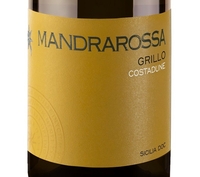 This wine from, Mandrarossa, the upscale label of an excellent Sicilian cooperative, Settesoli, could qualify for the best white wine value of the year. Wine co-ops get little respect, which is a shame. The outdated vision of a co-op is that all the grapes go into one pot and out comes one innocuous wine. … Read more
This wine from, Mandrarossa, the upscale label of an excellent Sicilian cooperative, Settesoli, could qualify for the best white wine value of the year. Wine co-ops get little respect, which is a shame. The outdated vision of a co-op is that all the grapes go into one pot and out comes one innocuous wine. … Read more
Mandrarossa, Sicilia IGT (Sicily, Italy) “Timperrosse” 2018
($20, Palm Bay International): 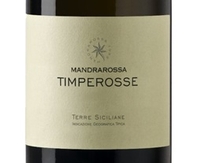 Full disclosure: Petit Verdot as a monovarietal ranks among my least favorite wines. Which makes this wine all the more impressive. I was struck by its elegance and balance and then amazed when I discovered it was made entirely from Petit Verdot. … Read more
Full disclosure: Petit Verdot as a monovarietal ranks among my least favorite wines. Which makes this wine all the more impressive. I was struck by its elegance and balance and then amazed when I discovered it was made entirely from Petit Verdot. … Read more
Château Feuillet, Valle d’Aosta (Aosta, Italy) Petite Arvine 2017
($30, Kermit Lynch Wine Merchant): 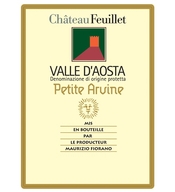 Jan Novak, the wine director at Il Capriccio, a wonderful Italian restaurant in Waltham, just west of Boston, suggested this wine, which was unknown to me. Since she has probably forgotten more about Italian wine than I know, I agreed immediately. … Read more
Jan Novak, the wine director at Il Capriccio, a wonderful Italian restaurant in Waltham, just west of Boston, suggested this wine, which was unknown to me. Since she has probably forgotten more about Italian wine than I know, I agreed immediately. … Read more
Les Vignerons du Sieur D’Arques, Crémant de Limoux (France) “Toques et Clochers” Brut 2014
($19, Wine Wine Situation): 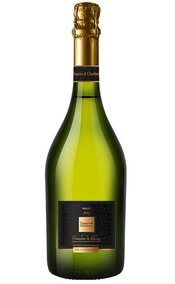 Limoux claims to be home to the first sparkling wines, a claim that Champagne, of course, disputes. But there is no doubt that the town of Limoux near the Pyrenees has long produced a sparkling wine, called Blanquette de Limoux (Blanquette is the local name for the Mauzac grape and means white in the local dialect). … Read more
Limoux claims to be home to the first sparkling wines, a claim that Champagne, of course, disputes. But there is no doubt that the town of Limoux near the Pyrenees has long produced a sparkling wine, called Blanquette de Limoux (Blanquette is the local name for the Mauzac grape and means white in the local dialect). … Read more
Passopisciaro, Terre Siciliane IGT (Sicily, Italy) Chardonnay “Passobianco” 2017
($37):  Andrea Franchetti, who also owns Tenuta Trinoro, an estate in Tuscany’s Val D’Orcia, started a winery in Sicily about 20 years ago. In a bold move, he planted 10 acres of Chardonnay at high elevations (2,500 to 3,000 feet above sea level) in powdery lava soil, figuring that the elevation and soil would impart a distinctive character to this grape. … Read more
Andrea Franchetti, who also owns Tenuta Trinoro, an estate in Tuscany’s Val D’Orcia, started a winery in Sicily about 20 years ago. In a bold move, he planted 10 acres of Chardonnay at high elevations (2,500 to 3,000 feet above sea level) in powdery lava soil, figuring that the elevation and soil would impart a distinctive character to this grape. … Read more
Cerulli Spinozzi, Colline Teramane DOCG (Abruzzo, Italy) “Torre Migliori” 2013
($18, Romano Brands):  One of the great things about wines from Italy is how many distinctive ones, like this one, fly under the radar. Abruzzo does not have the name recognition of Tuscany nor does the DOCG of Colline Teramane ring any bells, which explains why this wine’s price doesn’t come close to recognizing its quality.… Read more
One of the great things about wines from Italy is how many distinctive ones, like this one, fly under the radar. Abruzzo does not have the name recognition of Tuscany nor does the DOCG of Colline Teramane ring any bells, which explains why this wine’s price doesn’t come close to recognizing its quality.… Read more
Nicolas-Jay, Willamette Valley (Oregon) Pinot Noir 2017
($65):  Nicolas-Jay, a French-American collaboration that started in 2012, is producing superb Pinot Noir in Oregon. On the American side is music entrepreneur, Jay Boberg. Bringing the Burgundian perspective to the venture is super star Jean-Nicolas Méo, who currently heads the famed Méo-Camuzet estate in Vosne Romanée. … Read more
Nicolas-Jay, a French-American collaboration that started in 2012, is producing superb Pinot Noir in Oregon. On the American side is music entrepreneur, Jay Boberg. Bringing the Burgundian perspective to the venture is super star Jean-Nicolas Méo, who currently heads the famed Méo-Camuzet estate in Vosne Romanée. … Read more
Tongue Dancer, Russian River Valley (Sonoma County, California) Chardonnay Bacigalupi Vineyard 2017
($50):  Similar to Tongue Dancer’s 2017 Pinot Noir, their Chardonnay packs plenty of flavor. Thankfully, despite its weight and intensity, the winemaking team maintained balance with invigorating acidity that keeps the wine fresh and lively. It is lush with hints of tropical fruit-like flavors. … Read more
Similar to Tongue Dancer’s 2017 Pinot Noir, their Chardonnay packs plenty of flavor. Thankfully, despite its weight and intensity, the winemaking team maintained balance with invigorating acidity that keeps the wine fresh and lively. It is lush with hints of tropical fruit-like flavors. … Read more
Tongue Dancer, Sonoma Coast (Sonoma County, California) Pinot Noir Putnam Vineyard “Pinot de Ville” 2017
($65):  The over-weight bottle prejudiced against this wine, but that assessment disappeared with the first sip. Yes, it’s a big Pinot Noir, with savory exuberance intertwined with deep fruit flavors. Still, it does not fall into the Pinot Syrah — overdone category. … Read more
The over-weight bottle prejudiced against this wine, but that assessment disappeared with the first sip. Yes, it’s a big Pinot Noir, with savory exuberance intertwined with deep fruit flavors. Still, it does not fall into the Pinot Syrah — overdone category. … Read more
Steele, Lake County (North Coast, California) Cabernet Franc 2017
($20):  Jed Steele has been a luminary in the California wine industry. He started his career 50 years ago in 1968 at Stoney Hill winery in Napa. His eponymous winery in Lake County marks its 25th anniversary with the 2017 vintage. … Read more
Jed Steele has been a luminary in the California wine industry. He started his career 50 years ago in 1968 at Stoney Hill winery in Napa. His eponymous winery in Lake County marks its 25th anniversary with the 2017 vintage. … Read more
Passopisciaro, Terre Siciliane IGT (Sicily, Italy) Chardonnay “Passobianco” 2017
($37):  Andrea Franchetti, who also owns Tenuta Trinoro, an estate in Tuscany’s Val D’Orcia, started a winery in Sicily about 20 years ago. In a bold move, he planted 10 acres of Chardonnay at high elevations (2,500 to 3,000 feet above sea level) in powdery lava soil, figuring that the elevation and soil would impart a distinctive character to this grape. … Read more
Andrea Franchetti, who also owns Tenuta Trinoro, an estate in Tuscany’s Val D’Orcia, started a winery in Sicily about 20 years ago. In a bold move, he planted 10 acres of Chardonnay at high elevations (2,500 to 3,000 feet above sea level) in powdery lava soil, figuring that the elevation and soil would impart a distinctive character to this grape. … Read more
Cerulli Spinozzi, Colline Teramane DOCG (Abruzzo, Italy) “Torre Migliori” 2013
($18, Romano Brands):  One of the great things about wines from Italy is how many distinctive ones, like this one, fly under the radar. Abruzzo does not have the name recognition of Tuscany nor does the DOCG of Colline Teramane ring any bells, which explains why this wine’s price doesn’t come close to recognizing its quality.… Read more
One of the great things about wines from Italy is how many distinctive ones, like this one, fly under the radar. Abruzzo does not have the name recognition of Tuscany nor does the DOCG of Colline Teramane ring any bells, which explains why this wine’s price doesn’t come close to recognizing its quality.… Read more
Domaine Louis Latour, Pernand-Vergelesses 1er Cru (Burgundy, France) En Caradeux 2017
($45, Louis Latour, USA):  Maison Louis Latour, on of Burgundy’s top producers, made a spectacular array of white wines in 2017. This Premier Cru from Pernand-Vergelesses is just one example. Latour owns a portion of the vineyard, En Caradeux, which sits in an ideal position in the middle of the slope, facing east, which means it’s a Domaine or Estate wine. … Read more
Maison Louis Latour, on of Burgundy’s top producers, made a spectacular array of white wines in 2017. This Premier Cru from Pernand-Vergelesses is just one example. Latour owns a portion of the vineyard, En Caradeux, which sits in an ideal position in the middle of the slope, facing east, which means it’s a Domaine or Estate wine. … Read more
Tenuta Cavalier Pepe, Greco di Tufo DOCG (Campania, Italy) “Grancare” 2016
($36, Romano Brands):  Greco di Tufo is one of Italy’s great white wines. This one has slightly nutty nuances and the hint of lava-like mineral notes you’d expect from its location near Mount Vesuvius. Bright and enlivening acidity tingles the palate. … Read more
Greco di Tufo is one of Italy’s great white wines. This one has slightly nutty nuances and the hint of lava-like mineral notes you’d expect from its location near Mount Vesuvius. Bright and enlivening acidity tingles the palate. … Read more
Illuminati, Montepulciano d’Abruzzo DOC (Italy) “Riparosso” 2017
($13, Montcalm Wine Importers):  Illuminati does it again with their Riparosso. They habitually produce a wine that delivers far more than the price suggests. It’s a bright and lively mid-weight wine that combines fruit and savory notes. A lovely firmness and a hint of bitterness in the finish, not to mention the price, makes it perfect for a simple mid-week pasta and meat sauce, or pizza.… Read more
Illuminati does it again with their Riparosso. They habitually produce a wine that delivers far more than the price suggests. It’s a bright and lively mid-weight wine that combines fruit and savory notes. A lovely firmness and a hint of bitterness in the finish, not to mention the price, makes it perfect for a simple mid-week pasta and meat sauce, or pizza.… Read more
Cerulli Spinozzi, Colli Aprutini IGT (Abruzzo, Italy) Pecorino “Cortalto” 2016
($15, Romano Brands):  Pecorino is, of course, a cheese. But it turns out to also be a grape and a wine. An attractive bite is what the cheese and the wine have in common. Cerulli Spinozzi, one of the top producers in Abruzzo, a region due east of Rome on the Adriatic, has consistently made a winsome Pecorino. … Read more
Pecorino is, of course, a cheese. But it turns out to also be a grape and a wine. An attractive bite is what the cheese and the wine have in common. Cerulli Spinozzi, one of the top producers in Abruzzo, a region due east of Rome on the Adriatic, has consistently made a winsome Pecorino. … Read more
Giusti, Pinot Grigio dell Venezie DOC (Veneto, Italy) “Longheri” 2017
($18, Romano Brands):  A sea of mediocre — at best — Pinot Grigio on retailers’ shelves creates an enormous hurdle for the consumer. The grape and wine have become a brand by itself. You see it at events or at bars when people order “a glass of Pinot Grigio” without reference to the producer. … Read more
A sea of mediocre — at best — Pinot Grigio on retailers’ shelves creates an enormous hurdle for the consumer. The grape and wine have become a brand by itself. You see it at events or at bars when people order “a glass of Pinot Grigio” without reference to the producer. … Read more
Vinacola Cherchi, Vermentino di Sardegna DOC (Sardinia, Italy) “Tuvaoes” 2017
($32, Romano Brands):  Vermentino is a grape that needs to see the sea, according to winemakers. The leading areas are Sardinia, the coast of Tuscany, and Liguria. This mid-weight one from Sardinia has a substantial mineral component buttressed by vibrant and lengthy acidity that amplifies its charms. … Read more
Vermentino is a grape that needs to see the sea, according to winemakers. The leading areas are Sardinia, the coast of Tuscany, and Liguria. This mid-weight one from Sardinia has a substantial mineral component buttressed by vibrant and lengthy acidity that amplifies its charms. … Read more
Giusti, Pinot Grigio dell Venezie DOC (Veneto, Italy) “Longheri” 2017
($18, Romano Brands):  A sea of mediocre — at best — Pinot Grigio on retailers’ shelves creates an enormous hurdle for the consumer. The grape and wine have become a brand by itself. You see it at events or at bars when people order “a glass of Pinot Grigio” without reference to the producer. … Read more
A sea of mediocre — at best — Pinot Grigio on retailers’ shelves creates an enormous hurdle for the consumer. The grape and wine have become a brand by itself. You see it at events or at bars when people order “a glass of Pinot Grigio” without reference to the producer. … Read more
Grattamacco, Bolgheri DOC (Tuscany, Italy) Vermentino 2017
($52, Winebow):  I know, 50 bucks for a Vermentino? But this is no regular Vermentino. It’s a captivating, stop-you-in-your-tracks kind of wine. Grattamacco, founded in 1977, was the second winery, after Sassicaia, in what’s now the Bolgheri DOC. They planted Vermentino in addition to Cabernet, Merlot and Sangiovese and now claim to have the oldest Vermentino vines in Bolgheri, which probably accounts, at least in part, for the wine’s splendor. … Read more
I know, 50 bucks for a Vermentino? But this is no regular Vermentino. It’s a captivating, stop-you-in-your-tracks kind of wine. Grattamacco, founded in 1977, was the second winery, after Sassicaia, in what’s now the Bolgheri DOC. They planted Vermentino in addition to Cabernet, Merlot and Sangiovese and now claim to have the oldest Vermentino vines in Bolgheri, which probably accounts, at least in part, for the wine’s splendor. … Read more
Vinacola Cherchi, Vermentino di Sardegna DOC (Sardinia, Italy) “Tuvaoes” 2017
($32, Romano Brands):  Vermentino is a grape that needs to see the sea, according to winemakers. The leading areas are Sardinia, the coast of Tuscany, and Liguria. This mid-weight one from Sardinia has a substantial mineral component buttressed by vibrant and lengthy acidity that amplifies its charms. … Read more
Vermentino is a grape that needs to see the sea, according to winemakers. The leading areas are Sardinia, the coast of Tuscany, and Liguria. This mid-weight one from Sardinia has a substantial mineral component buttressed by vibrant and lengthy acidity that amplifies its charms. … Read more
Tenuta Cavalier Pepe, Greco di Tufo DOCG (Campania, Italy) “Grancare” 2016
($36, Romano Brands):  Greco di Tufo is one of Italy’s great white wines. This one has slightly nutty nuances and the hint of lava-like mineral notes you’d expect from its location near Mount Vesuvius. Bright and enlivening acidity tingles the palate. … Read more
Greco di Tufo is one of Italy’s great white wines. This one has slightly nutty nuances and the hint of lava-like mineral notes you’d expect from its location near Mount Vesuvius. Bright and enlivening acidity tingles the palate. … Read more
Illuminati, Montepulciano d’Abruzzo DOC (Italy) “Riparosso” 2017
($13, Montcalm Wine Importers):  Illuminati does it again with their Riparosso. They habitually produce a wine that delivers far more than the price suggests. It’s a bright and lively mid-weight wine that combines fruit and savory notes. A lovely firmness and a hint of bitterness in the finish, not to mention the price, makes it perfect for a simple mid-week pasta and meat sauce, or pizza.… Read more
Illuminati does it again with their Riparosso. They habitually produce a wine that delivers far more than the price suggests. It’s a bright and lively mid-weight wine that combines fruit and savory notes. A lovely firmness and a hint of bitterness in the finish, not to mention the price, makes it perfect for a simple mid-week pasta and meat sauce, or pizza.… Read more
Castellare di Castellina, Chianti Classico DOCG (Tuscany, Italy) 2017
($22, Winebow):  It’s hard to go wrong with any of the wines from Castellare di Castellina, one of the very best Chianti Classico producers. This wine, their normale or annata, is their base Chianti Classico and what high base it represents. … Read more
It’s hard to go wrong with any of the wines from Castellare di Castellina, one of the very best Chianti Classico producers. This wine, their normale or annata, is their base Chianti Classico and what high base it represents. … Read more
Villa Pinciana, Maremma Toscana DOC (Tuscany, Italy) “Airali” 2018
($20, Bluest Sky Group Imports):  Maremma Toscana, a large and relatively new DOC, is located in southwestern Tuscany, roughly halfway between Rome and Florence, extending from the coast to hilly inland areas. The Vermentino grape is king here for white wines. … Read more
Maremma Toscana, a large and relatively new DOC, is located in southwestern Tuscany, roughly halfway between Rome and Florence, extending from the coast to hilly inland areas. The Vermentino grape is king here for white wines. … Read more
Grignano, Chianti Rufina (Tuscany, Italy) 2016
($24, Montcalm Wine Importers):  Though perhaps not as well-known as Chianti Classico, Chianti Rufina, another of the eight subzones of the great Chianti region, is home to wonderful wines, such as this one. The focus of Grignano’s 2016 Rufina is on a combination of earthy and fruity notes. … Read more
Though perhaps not as well-known as Chianti Classico, Chianti Rufina, another of the eight subzones of the great Chianti region, is home to wonderful wines, such as this one. The focus of Grignano’s 2016 Rufina is on a combination of earthy and fruity notes. … Read more
Castellare di Castellina, Chianti Classico DOCG (Trentino, Italy) 2017
($22, Winebow):  It’s hard to go wrong with any of the wines from Castellare di Castellina, one of the very best Chianti Classico producers. This wine, their normale or annata, is their base Chianti Classico and what high base it represents. … Read more
It’s hard to go wrong with any of the wines from Castellare di Castellina, one of the very best Chianti Classico producers. This wine, their normale or annata, is their base Chianti Classico and what high base it represents. … Read more
Vietti, Barbaresco DOCG (Piedmont, Italy) “Masseria” 2015
($95):  Vietti, clearly one of Piedmont’s and Italy’s top producers and known for their stunning array of Barolo, makes only one Barbaresco, currently, according to their website. Labeled, “Masseria,” it comes from two vineyards in Neive and Treiso. The 2015, from a riper vintage, is gorgeous and particularly engaging at this point in its life. … Read more
Vietti, clearly one of Piedmont’s and Italy’s top producers and known for their stunning array of Barolo, makes only one Barbaresco, currently, according to their website. Labeled, “Masseria,” it comes from two vineyards in Neive and Treiso. The 2015, from a riper vintage, is gorgeous and particularly engaging at this point in its life. … Read more
